How I made an LVT for my shock dyno.
That is a Linear Velocity Transducer. As motion is involved I have made a movie.
An LVT measures linear velocity over a limited range depending on the construction details. I wanted a transducer that had a range of 100 mm. with a maximum velocity of 1 m/s.
Click for full size
Here are the ingredients. It could not get much simpler.
In the making.
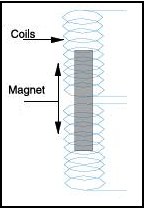
What is inside and mounted.
Until I made this device I got the velocity information in the usual way of measuring displacement with a potentiometer and differentiating that signal. The process of numerical differentiation leads to noise in the velocity signal. The noise level depends on the resolution of the DAC (Digital Analog Conversion). I used a 12 bit LabJack U3 to convert the data, if I had used a 10 bit Arduino the noise level would have been 4 times more.
This pic shows the difference between getting the velocity direct from the LVT and indirectly from the potentiometer.
I still want displacement information, but I now get that by integrating the velocity signal which reduces noise. I get a slightly better displacement signal from the velocity than directly. This is often termed a "win-win".
The movie is in two parts, the first shows the making and the results. As of writing this the second part is not ready but will describe the simple electronic bits and discuss resolution and range considerations. I'll add the link when ready.


 LinkBack URL
LinkBack URL About LinkBacks
About LinkBacks

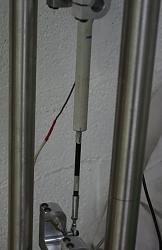
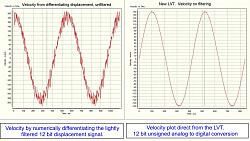
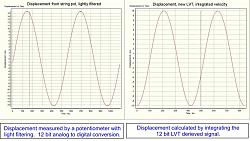


 Reply With Quote
Reply With Quote






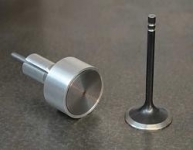



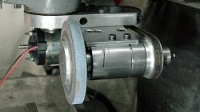







Bookmarks